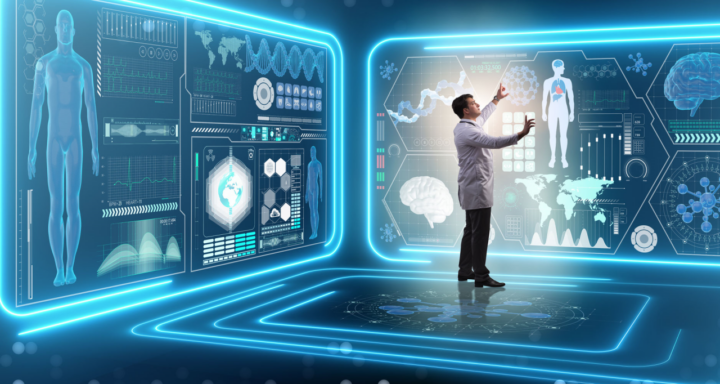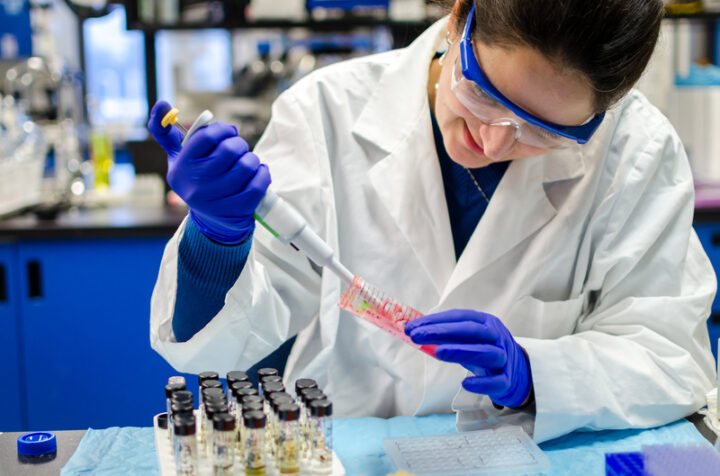Medical care and pharmaceutics are in the leading positions among the most important industries nowadays. This article will discuss advanced AI research and the ML experiments implemented by different scientific institutions in 2024.
And below, we’ll share with you a mini-review of inventions in the field of AI that helps achieve new breakthroughs in medicine and pharmaceutical production. If you need professional advice in software development for medtech, biotech, or health care, I recommend the experts from Serokell.
Benefits of AI in Medicine

There are many potential benefits of artificial intelligence (AI) in medicine, including improved accuracy and speed of diagnosis, more effective treatments, and reduced costs.
AI can help doctors diagnose illnesses more quickly and accurately. A study published in the journal Nature found that when AI is used to screen medical images for cancer, it can identify tumors with greater accuracy than human doctors. AI can also help monitor patients’ health over time, making better decisions about which treatments to administer.
It can also help physicians treat patients more effectively. For example, AI can recommend medications based on a patient’s unique symptoms and history. AI can also help doctors spot rare diseases early on, allowing for quicker diagnoses and more effective treatment plans. AI techniques can also reduce the cost of healthcare. For example, it can automate physician reviews of patient records to identify unnecessary or duplicate tests and treatments. This saves hospitals money and allows them to provide more comprehensive care to their patients.
As AI continues to develop, it is likely that further applications will be developed in the healthcare field. One possibility is automatic diagnosis and treatment (ADT). ADT would involve using AI to identify symptoms and automatically send patients for appropriate tests or treatments. This would save doctors time and help ensure that patients receive the best possible care.
AI and pharmaceuticals companies’ collaboration
Artificial intelligence (AI) algorithms and genomic analysis methods are being used to speed up the search for drug targets. In this regard, Illumina and AstraZeneca have created a collaboration to increase the number of discoveries in the area of knowledge about human omics.
Illumina is an American company applying innovative technologies to genomics and molecular diagnostics analysis. AstraZeneca is one of the biggest world pharmaceutical companies creating innovative medicines and delivering the most meaningful technological benefit to patients, healthcare systems, and societies on the globe.
An Illumina representative said that with industry-leading technology, it is possible to identify genetic variants that cause diseases and prove causal relationships between them and prioritize medicines accordingly. Just before, they developed a new genome sequencing toolkit, including NovaSeq X and NovaSeq X Plus. These tools are AI-based and combined with AstraZeneca’s analytical system. For example, they use SpliceAI, a deep learning tool for identifying mutations associated with certain conditions.
These companies’ collaboration is going to combine AI-based frameworks and tools with working with large-scale datasets. Additional AI tools help identify genetic variants that influence the development of diseases more accurately. Moreover, such tools contribute to the development of effective and safe treatments.
The AstraZeneca representative expressed his confidence that the development of innovations relating to AI, applied in medical research and work with human genomics, provides answers to many important questions and allows us to identify new targets to discover new effective treatments. The future of pharmaceuticals is the meeting point of human genetics and artificial intelligence, so the collaboration between Illumina and AstraZeneca is key to the future of genetics research.
Cancer research technologies

Researchers at the Dana-Farber Cancer Institute, which has developed many of the latest therapies based on cancer genetics, have released data on a computer platform called MatchMiner, which enables clinical research professionals to identify and compare patients in a specific group of clinical trials based on genetic changes in those patients’ tumors. Precision Oncology journal states that one in five patients agreed to join the trials. In addition, it reduced the time for their registration by at least 20%.
Tali Mazor, Ph.D., commented that this approach to tumor profiling is now part of therapy as clinical trials and new anti-cancer drugs continue to emerge. The growing trend of these two processes creates a mismatch, as it is necessary to select an appropriate test for each patient. MatchMiner helps with this task. They based it on genomic data analysis in Dana-Farber. Then they developed and launched it in 2017, and now it combines this data with its own clinical trial data.
MatchMiner is an open source, and other medical centers can use it too. Today, the platform has information on more than 350 trials, and the curator reviewed new trials and added them to the existing set.
Global Biobanking

GBMI is a network of biobanks across five continents with over 2.2 million members and contributes to the improvement and advancement of human genomics research. They created it in 2019 and designed it to increase the statistical power of genomic analysis, provide research into understudied diseases and improve the quality and accuracy of research.
A critical study by the Broad Institute brought together data, created a large combined biobank, and identified 317 known and 183 new genes associated with 14 different diseases. As a result of two other studies, data from biobanks were used to find new drug targets.
Another study focused on rare diseases and used data from 13 biobanks to study the rare disease, idiopathic pulmonary fibrosis. They have identified six new variants associated with this disease.
Overall summary
At this moment, let’s make a conclusion. AI is frequently used in medical research to evaluate and find patterns in massive, complicated datasets. Importantly, this data can be analyzed much more quickly, with less effort and with a higher level of detalization, than with traditional analytical techniques, which will save money and lead to better results.
Similarly, AI can combine various datasets and sift through large amounts of scientific literature to locate pertinent findings. For example, scientists at the Institute of Cancer Research have created the novel canSAR database, which enables the integration of independent chemistry, biology, patient, and disease information with clinical and genetic data from patients. The AI system can apply machine-learning techniques to create valuable cancer drug discovery after compiling and “translating” this massive amount of data into a common language.





